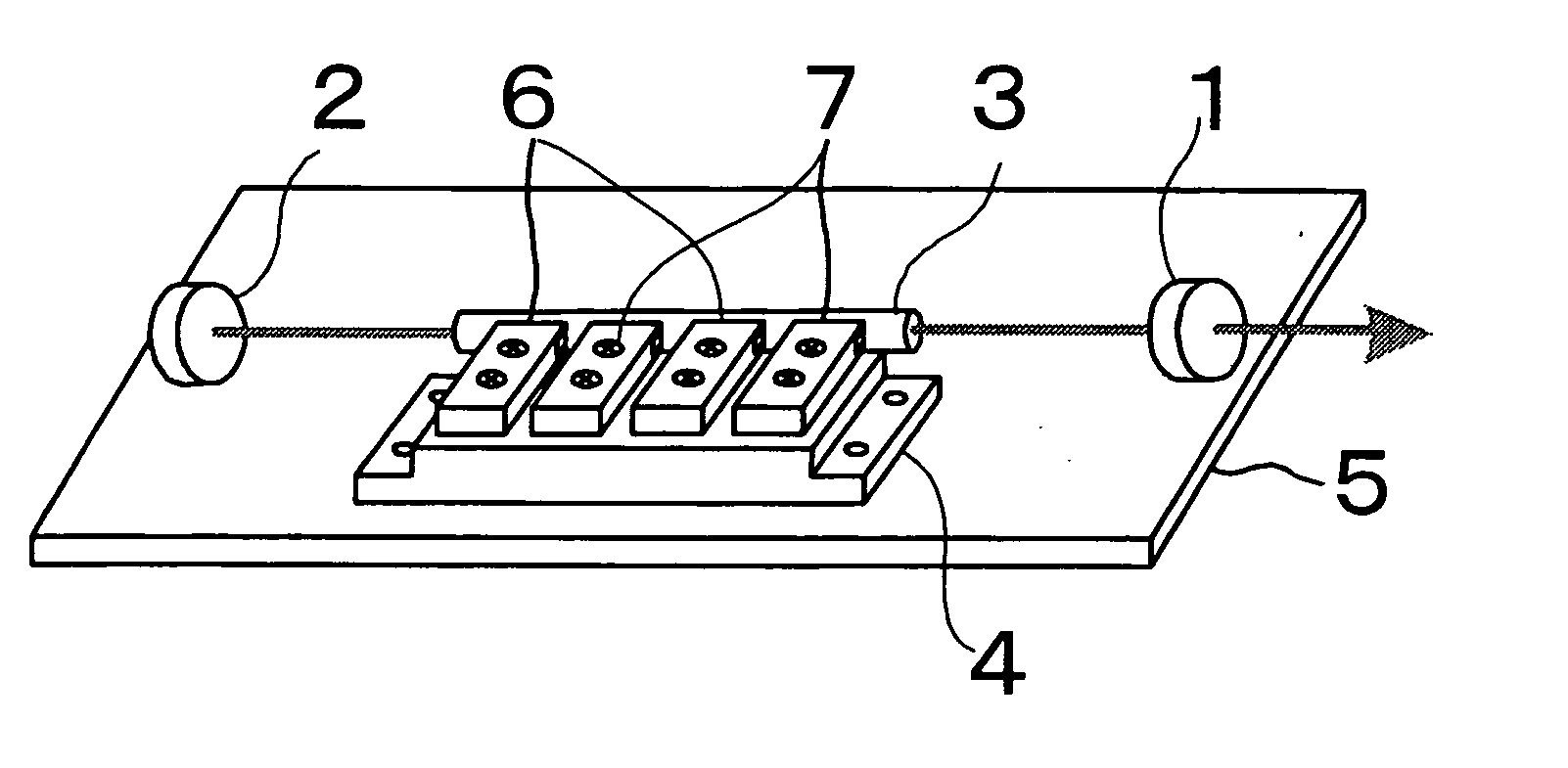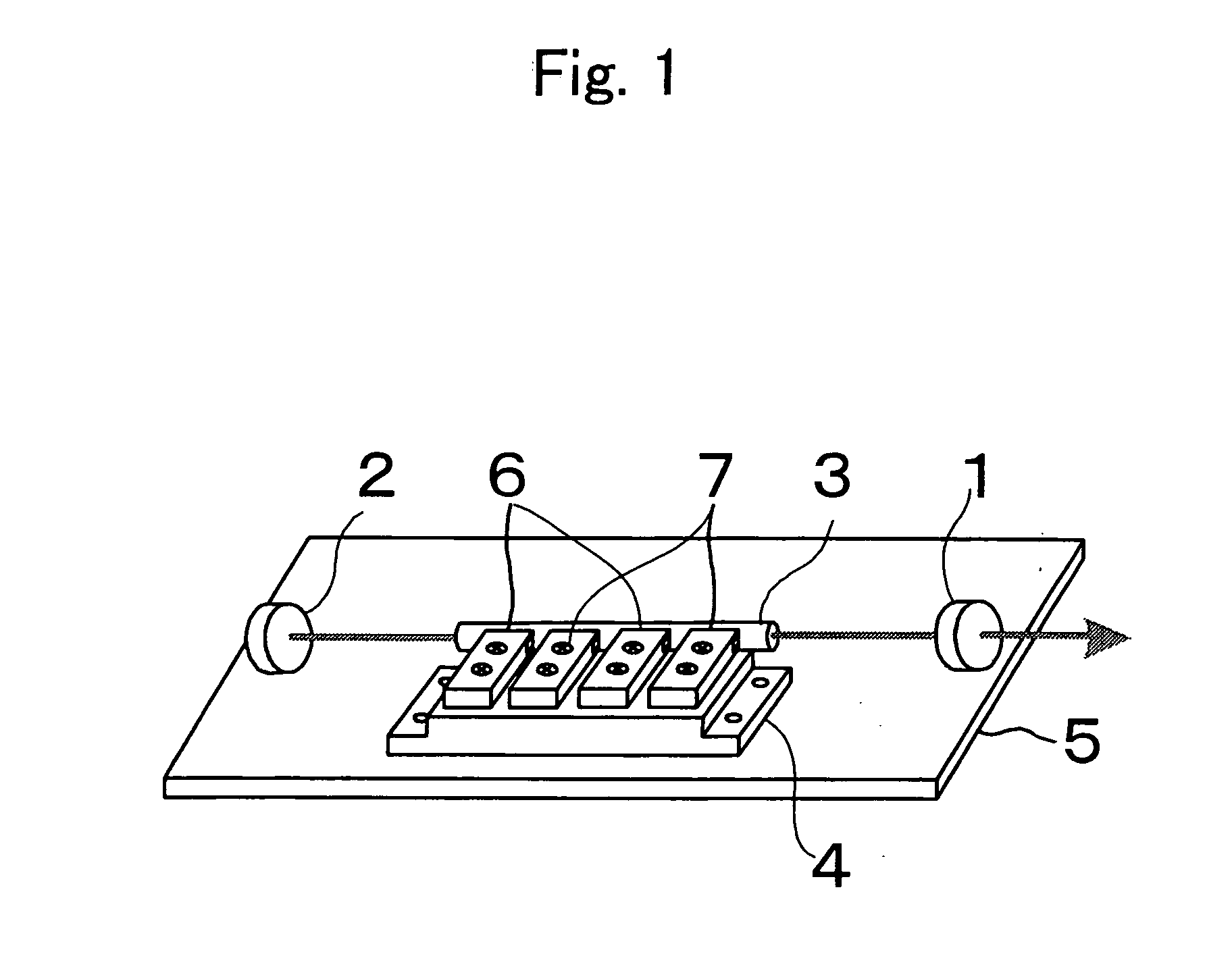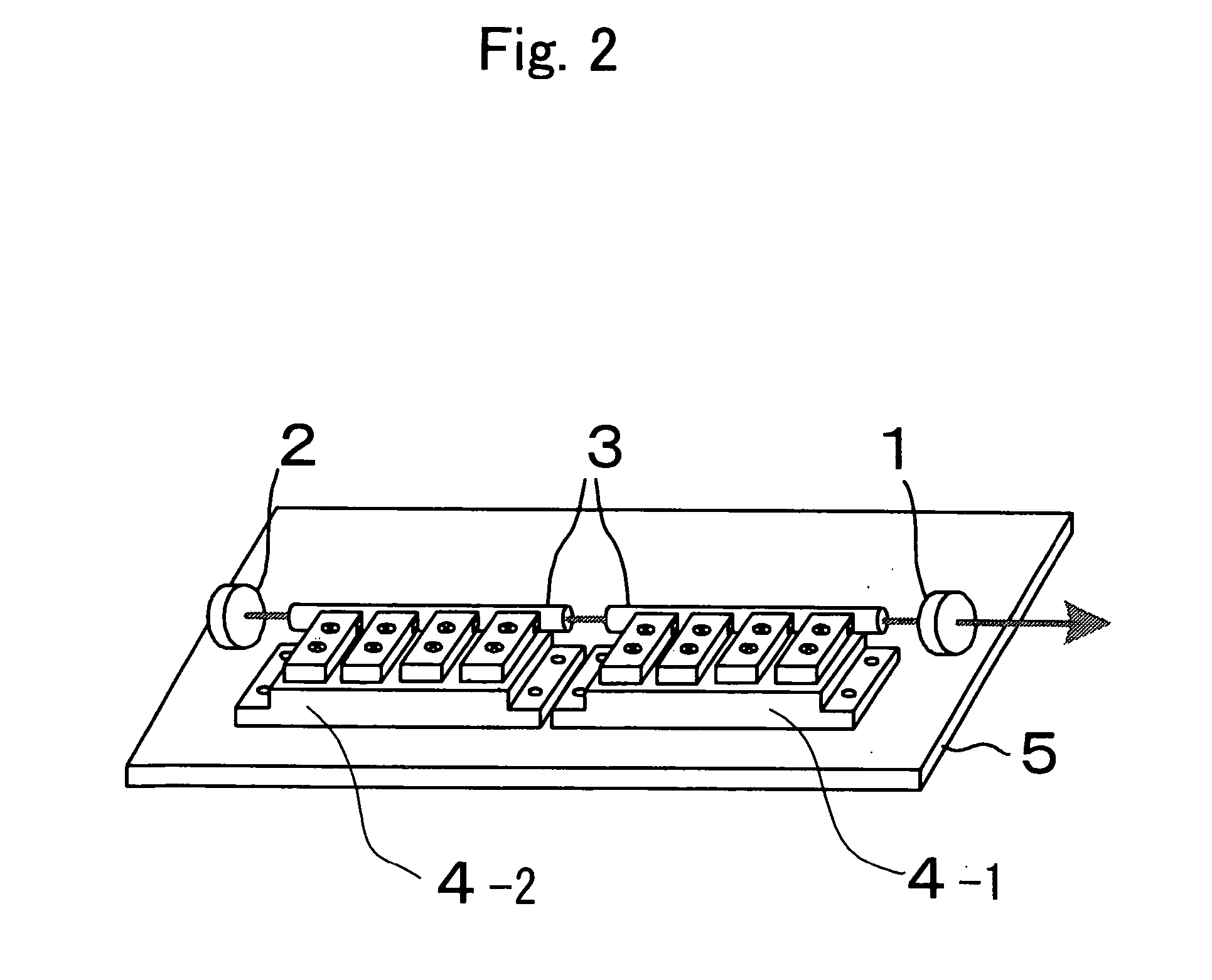Diode-pumped solid-state laser oscillator
a laser oscillator and diode-pumped technology, which is applied in the direction of lasers, semiconductor lasers, active medium materials, etc., can solve the problems of reducing the output power of diode-pumped solid-state lasers, limiting the amount of electrical power that can be used, and reducing the pump-light absorption effect, so as to expand the temperature range and expand the temperature range
- Summary
- Abstract
- Description
- Claims
- Application Information
AI Technical Summary
Benefits of technology
Problems solved by technology
Method used
Image
Examples
example 1
[0033] Generally, the output power of an LD decreases as the temperature increases. Also, the pump-light absorption index of the solid-state laser medium has the wavelength dependency shown in FIG. 6. That is, in a prescribed wavelength band, the optical absorption index increases with an increase in wavelength.
[0034]FIG. 6 is a graph showing the wavelength dependency of the optical absorption index of a laser medium. As described below, a change in the absorbed pumping energy arising from a temperature change is minimized when combining a plurality of LDs having two or more different emission wavelengths. The temperature dependency of the optical output power of an LD is usually in the order of −0.24% / deg. Therefore, with respect to changes in LD temperature, a constant absorbed energy can be obtained by imparting to the absorption index of the laser medium, a temperature dependency of +0.24% / deg. When a Nd:YAG rod is used, the temperature dependency of the absorption index is neg...
example 2
[0038] This corresponds to the fourth aspect of the invention. In this Example, another array of LDs is incorporated in addition to the LDs of Example 1, with the additional LDs operating at a wavelength differentiated by the amount required for the expanded range of operating temperatures. The system switches between the two arrays of LDs in accordance with the operating temperature. For this, the laser oscillator is configured as shown in FIG. 2. In the pumping laser oscillator shown in FIG. 2, a solid-state laser rod 3 is located in an optical resonator formed by an output mirror 1 and an end mirror 2. The LDs on LD mount 4-1 are used for high-temperature pumping, and the LDs on LD mount 4-2 are used for low-temperature pumping. Heat generated by the LDs is transmitted via the LD mount to the laser base-plate 5, where it is cooled by air, water, or heat sink. Different LDs are used for high-temperature and low-temperature pumping. Which array of LDs is used depends on the ambient...
example 3
[0039] This also relates to the fourth aspect of the invention. The configuration of FIG. 2 is used, the difference from Example 2 being that both of the LD mounts have the same thermal conductivity. At the same temperature, each LD array is set to emit light at a different wavelength. The emission wavelength of the high-temperature LDs at a high temperature is the same as the emission wavelength of the low-temperature LDs at a low temperature. The solid-state-laser operating temperature range can be increased when switching the LD arrays according to the temperature of the operating environment.
PUM
 Login to View More
Login to View More Abstract
Description
Claims
Application Information
 Login to View More
Login to View More - R&D
- Intellectual Property
- Life Sciences
- Materials
- Tech Scout
- Unparalleled Data Quality
- Higher Quality Content
- 60% Fewer Hallucinations
Browse by: Latest US Patents, China's latest patents, Technical Efficacy Thesaurus, Application Domain, Technology Topic, Popular Technical Reports.
© 2025 PatSnap. All rights reserved.Legal|Privacy policy|Modern Slavery Act Transparency Statement|Sitemap|About US| Contact US: help@patsnap.com



